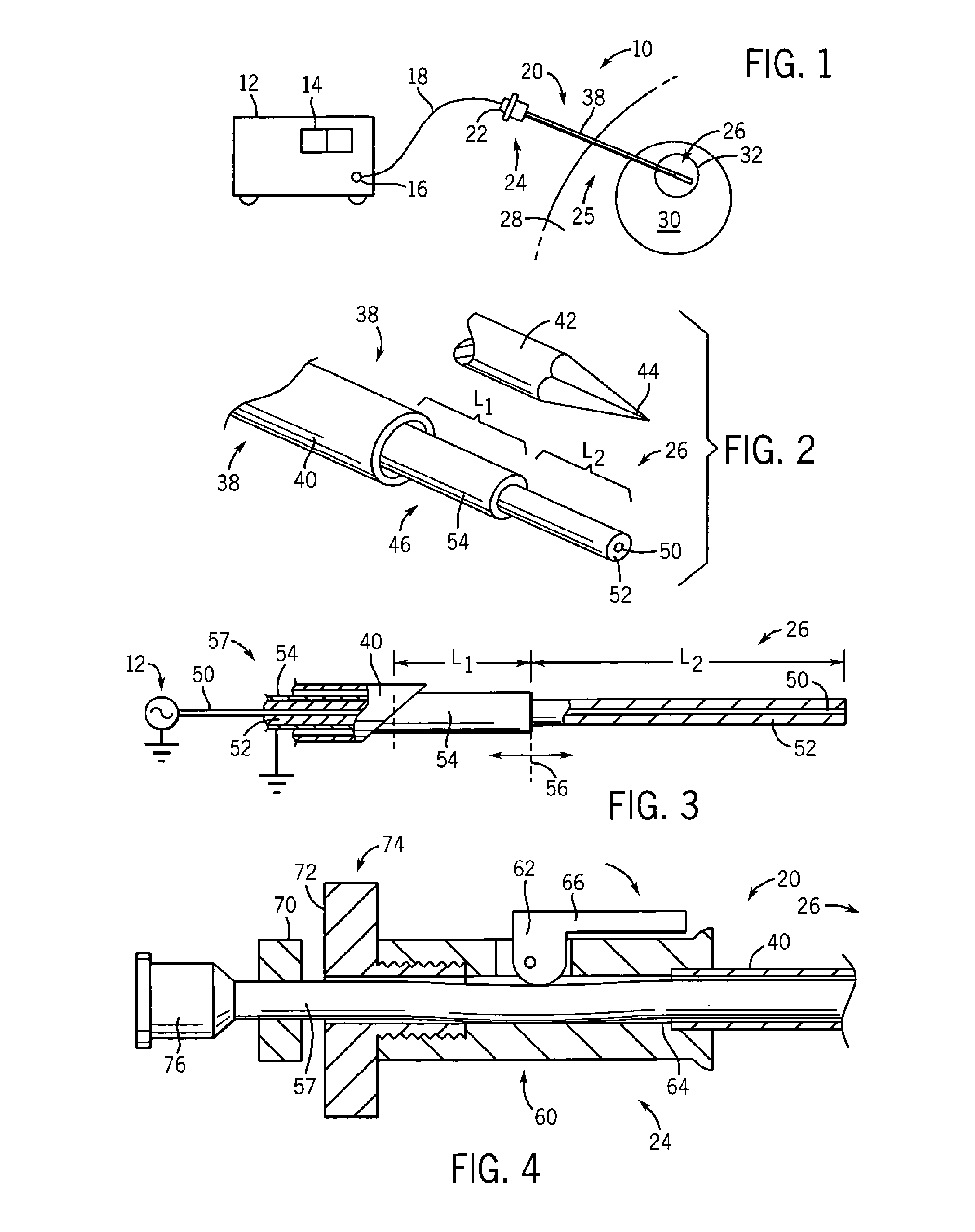Triaxial antenna for microwave tissue ablation
- Summary
- Abstract
- Description
- Claims
- Application Information
AI Technical Summary
Benefits of technology
Problems solved by technology
Method used
Image
Examples
first embodiment
[0121]As illustrated in FIG. 15, the present disclosure comprises a thin metallic wire antenna 4 positioned inside the vessel 3 by a non-radiating catheter 5. The antenna 4 may be purely metallic or contain a core or sections of ferrite or similar material to enhance the heating effect. For small, tortuous veins, the antenna / catheter should be flexible enough to migrate therethrough. An external microwave source 1 positioned proximate the skin surface 2 directs energy at the wire antenna 4 causing the antenna 4 to radiate locally, thereby focusing the microwave energy on the wall of the vessel 3 to heat and ablate the vessel 3. The length L 1 of the antenna 4 is arbitrary. The placement catheter 5 is located at the proximal end 6.
second embodiment
[0122]As illustrated in FIG. 16, the present disclosure comprises a coaxial cable 9 which feeds the radiating antenna 7 directly with microwave energy. That energy is radiated by the antenna 7 to the wall of the vessel 3. The antenna length L 2 is fixed by the frequency of the microwave energy applied.
third embodiment
[0123]As illustrated in FIG. 17, the present disclosure comprises an external microwave source 10 controlled in such a way as to focus radiated energy in a small volume 11 onto the vessel 3. The energy is applied transcutaneously.
[0124]In any of the three embodiments described above, a device such as a balloon may be used to assist in providing generally uniform energy delivery in the vessel. As illustrated in FIG. 18, the balloon 12, comprised of conductive material such as Mylar, is shown in use in the vessel 3 to hold the position of the antenna 7 relative to the vessel wall.
[0125]Further, the vascular method and system of the present disclosure may include the use of an ultrasound probe or other imaging system or device to guide the antennas into place in the vessels. The ultrasound probe may also house the microwave source, such as the external microwave source 1 shown in FIG. 15, or external microwave source 10 shown in FIG. 17. The ultrasound probe and / or the external microwa...
PUM
 Login to View More
Login to View More Abstract
Description
Claims
Application Information
 Login to View More
Login to View More - R&D
- Intellectual Property
- Life Sciences
- Materials
- Tech Scout
- Unparalleled Data Quality
- Higher Quality Content
- 60% Fewer Hallucinations
Browse by: Latest US Patents, China's latest patents, Technical Efficacy Thesaurus, Application Domain, Technology Topic, Popular Technical Reports.
© 2025 PatSnap. All rights reserved.Legal|Privacy policy|Modern Slavery Act Transparency Statement|Sitemap|About US| Contact US: help@patsnap.com



